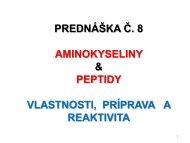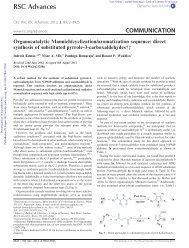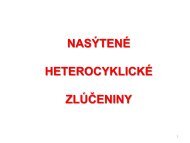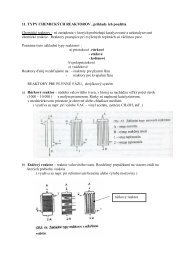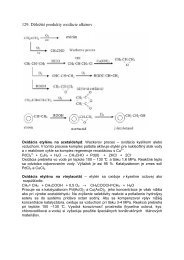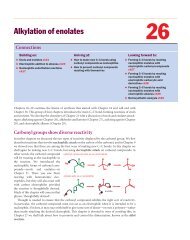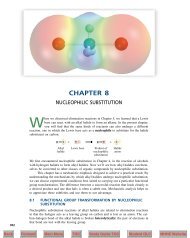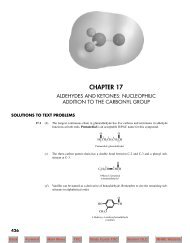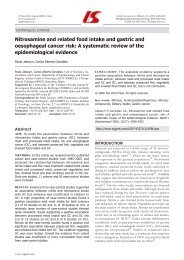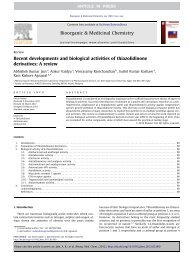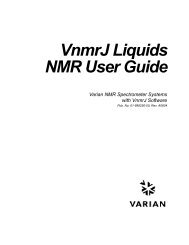Create successful ePaper yourself
Turn your PDF publications into a flip-book with our unique Google optimized e-Paper software.
Scheme 26 Reaction of Diazomethane with Dimesylmethanone O-Methyloxime [62]<br />
Ms<br />
Ms<br />
N<br />
62<br />
OMe<br />
+ CH 2N 2<br />
dioxane, EtOAc<br />
0 oC, 30 min<br />
87%<br />
<strong>13</strong>.<strong>13</strong>.1.1.2.1.2.3 Variation 3:<br />
From Diazoalkanes and Diarylazines<br />
N<br />
Ms<br />
N<br />
Ms<br />
N<br />
OMe<br />
63<br />
piperidine, dioxane, EtOAc<br />
−10 to 50 oC, 3 h<br />
50%<br />
Ms<br />
N<br />
N<br />
N<br />
OMe<br />
64<br />
Aromatic aldehyde azines 65 react with aryldiazomethanes in the presence of potassium<br />
tert-butoxide to give N-unsubstituted 4,5-diaryl-1H-1,2,3-triazoles 66 (Scheme 27). [51] The<br />
scope of this method has yet to be demonstrated since only two symmetrical triazoles<br />
66 are prepared by this way. The mechanism of this reaction seems to involve one 1,3-dipolar<br />
cycloaddition followed by base elimination of an aromatic imide anion. However it<br />
should be noted that even in the absence of the aryldiazomethanes, the aromatic aldehyde<br />
azines (DMSO, rt) in the presence of potassium tert-butoxide (1 equiv), give the<br />
same 4,5-diaryl-1H-1,2,3-triazoles, although in much lower yields. [51]<br />
Scheme 27 Reaction of Aromatic Aldehyde Azines with Aryldiazomethanes in the Presence<br />
of Potassium tert-Butoxide [51]<br />
Ar 1 CH<br />
N<br />
N<br />
65<br />
CHAr 1<br />
N<br />
N<br />
N<br />
N Ar1 Ar1 Ar<br />
H<br />
1<br />
H<br />
FOR PERSONAL USE ONLY<br />
432 Science of Synthesis <strong>13</strong>.<strong>13</strong> 1,2,3-<strong>Triazoles</strong><br />
+ Ar 1 CHN 2<br />
Ar 1<br />
DMSO, rt, 24 h<br />
Ar 1<br />
H<br />
N<br />
NH<br />
N<br />
N Ar1 <strong>13</strong>.<strong>13</strong>.1.1.2.1.3 Method 3:<br />
From Diazoalkanes and Heterocumulenes<br />
t-BuOK<br />
Ar 1<br />
Ar 1<br />
N<br />
H<br />
N<br />
N<br />
66 Ar 1 = Ph 92%<br />
Ar 1 = 4-ClC 6H 4 38%<br />
The reaction of diazoalkanes (or their organometallic derivatives) with heterocumulenes<br />
is a versatile method for the synthesis of 1H-1,2,3-triazoles. The reactions with ketenimines,<br />
carbodiimides, isocyanates, and isothiocyanates are performed under very mild<br />
conditions and generally they give the desired triazoles in moderate to excellent yields.<br />
A. C. TomØ, Section <strong>13</strong>.<strong>13</strong>, Science of Synthesis, 2004 Georg Thieme Verlag KG



